While there aren’t many hard and fast rules when it comes to gardening, there are a few simple tips that you need to keep in mind in order to have a successful harvest. One of those key tips is to rotate your garden crops every year.
Have you ever had a bumper crop of green beans or cucumbers one year and then hardly have any grow at all the next year? Did the same variety of plants that flourished the previous year look less healthy and vibrant this year? Maybe the crops even ended up with a disease or plant-specific pest?
If any of those scenarios sound familiar, then it likely isn’t the fact that you suddenly lost the ability to grow vegetables successfully. Chances are, it may have to do with not rotating your garden crops.
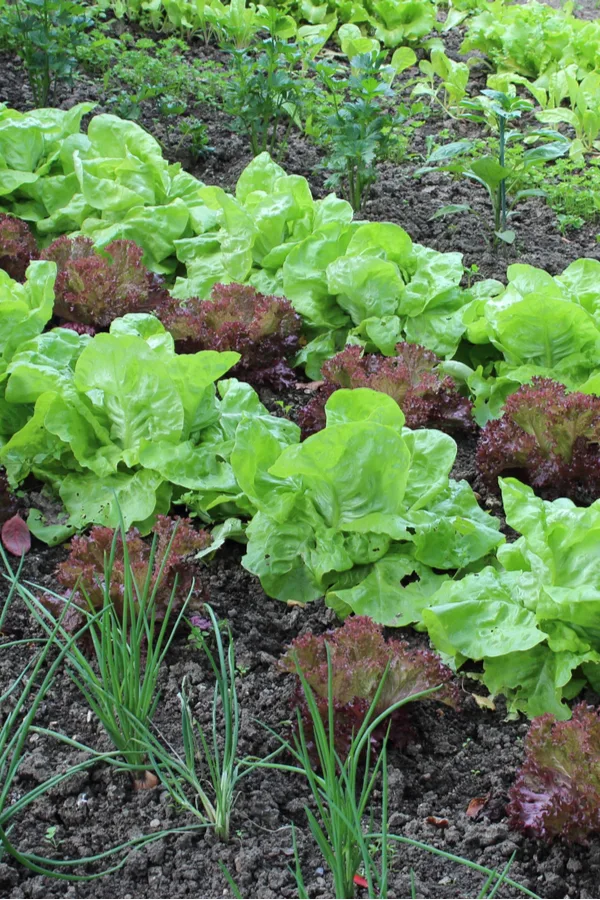
Rotating crops is one of the most important keys for gardeners to keep in mind when it comes time to plan their garden for the year. Not only is it important for the health of your future crops, but also for your soil as well.
What Does It Mean To Rotate Garden Crops?
In simple terms, rotating crops is the process of ensuring that the plants grow in different locations every year. You should aim to rotate your crops so that the same plant isn’t in the same location until 3 or 4 years have passed.
So if you plant cucumbers at the south end of your garden, they shouldn’t grow there again for another 3 or 4 years. Instead, choose a different plant family to go there (more on plant families below).
Rotating garden crops can really vary in difficulty depending on how in-depth you want to go. Using different cover crops and/or leaving some locations empty each season (called a “fallow” section) can affect crop rotation.
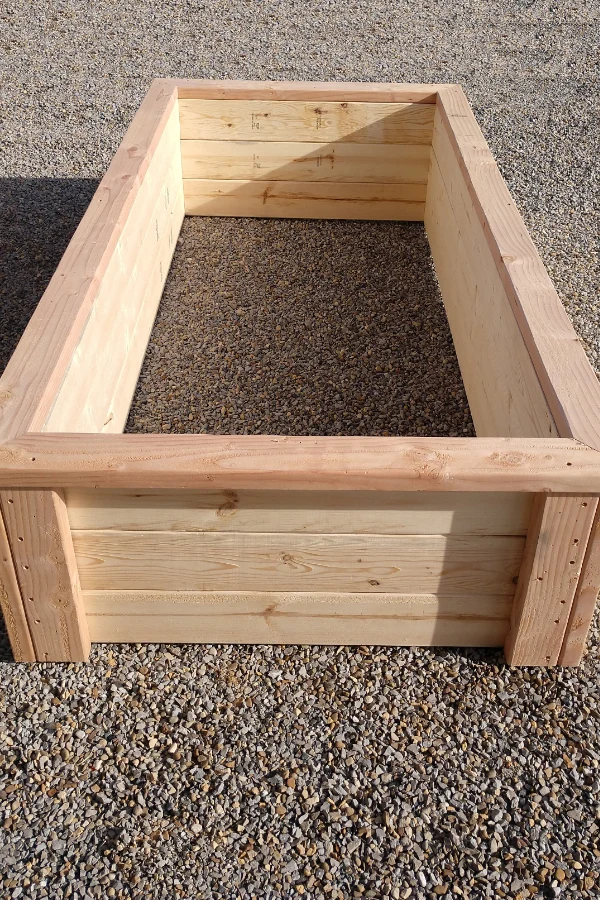
Even if you have a small garden, you still should rotate your crops in some form. It is especially important to rotate crops in raised beds as well as in traditional gardens. No matter the size of your garden or where the crops are planted, you need to be rotating the vegetable plants to have a successful harvest.
Plant Families
First, you need to understand how different types of crops are broken down into families before you learn why and how to rotate garden crops.
You can find a lot of different information about how many families there are in the gardening world. However, we will stick to the eight most commonly found families to keep things simple.
The families are not broken down based on the plants’ appearances as one might assume. The vegetables are actually grouped depending on the nutrients used as well as the types of diseases and pests they are susceptible to. Here are the most common eight vegetable plant families:
- Alliums – Chives, garlic, leeks, onions, and shallots
- Asters – Artichokes, chamomile, endive, lettuce, marigolds and sunflowers
- Brassicas – Arugula, broccoli, brussels sprouts, cabbage, cauliflower, collards, cress, kale, mustard greens, radishes, rutabaga and turnips
- Cucurbits – Cucumbers, gourds, melons, pumpkins, summer squash, winter squash and zucchini
- Grasses – Millet, oats, popcorn, rice, sweet corn and wheat
- Legumes – Green beans, peas, peanuts and soybeans
- Nightshades – Eggplant, tomatillos, tomatoes, peppers and potatoes
- Umbels – Carrots, celery, cilantro, dill, fennel, parsley and parsnip
Some crops such as okra and sweet potatoes are their own individual families and should be rotated as well. To have the best success, you should grow crop families together and rotate them accordingly as opposed to just rotating individual plants.
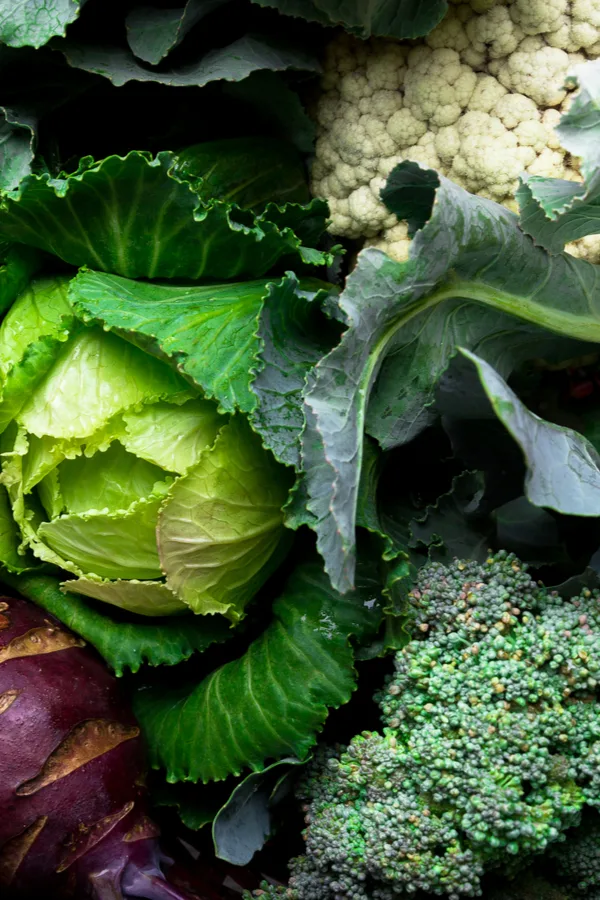
Why Rotate Garden Crops?
Reason #1 – How and Why To Rotate Garden Crops
Soil is made up of living organisms, minerals, nutrients, and organic material. In order for crops to grow and produce a big harvest, they require specific minerals and nutrients to sustain them. Most of these items are found in the soil.
As the growing season goes along, those vital nutrients from the soil start to get used up. If you continue to grow the same varieties of crops in the same location in your garden year after year, your soil will quickly lose the nutrients the plants need most.
Each crop family uses up specific nutrients from the soil in a different way. For example, some are heavy feeders. Tomatoes are a great example of this. Tomatoes use up a lot of nitrogen in order to produce their fruit. The more tomatoes stay in the same soil, the less nitrogen there will be in it.
Reason #2 – How and Why To Rotate Garden Crops
Another reason for needing to rotate your crops is related to soil-borne disease. Certain plant diseases are prevalent in specific families of crops. The more that same family of crops stays in the same soil location, the higher amounts of pathogens start to build up.
As those amounts increase, so does the chance that the pathogens take root in your crops. Using crop rotation can help to keep the pathogens at a lower level, thus keeping your plants healthier and safer.
Reason #3 – How and Why To Rotate Garden Crops
Just like the amount of pathogens increases, the same goes for plant-specific pests as well. Some types of pests – like squash bugs – will affect only certain types of crops.

If those insects aren’t taken care of during the fall, the pests will hang around during the winter. Once the spring rolls around, if the same crop families are planted in the same location, those insects will take up home in no time at all and reproduce. And it’s no secret how fast crops can be overtaken by a large insect population!
Exceptions To This “Rule”
There are some exceptions to this rule. Herbs, for example, don’t really need to be rotated since some of these stay in the ground year-round depending on your growing location. Herbs are also low feeders from the soil.
In addition, rotating crops doesn’t apply to perennial vegetable crops like rhubarb, asparagus, strawberries, raspberries, and artichokes. Those crops are ok to stay in the same location since they don’t get replanted every year.
Just keep in mind that you will want to amend those crops with compost and or fertilizer to keep the soil healthy and the crops growing their best.
How To Rotate Garden Crops
As mentioned earlier, crop rotation can vary in complexity and difficulty. The main goal is to only plant a crop family in the same location once every 3 to 4 years.
How you go about doing this task will vary depending on your garden setup and the plant selections you grow each season. The key is to not let it overwhelm you, and with that in mind, here are some simple tips to help:
Keep A Garden Journal – How and Why To Rotate Garden Crops
One of the biggest keys to a successful gardening career is to keep a garden journal each year. It doesn’t have to be anything fancy, but you should make note of what crops you grow each season, where they are located in your garden, and how successful (or unsuccessful) they were.

You can draw a simple sketch of your garden and map out where you want to plant your crops. This will be a huge factor in helping you plan out your crop rotation for the following year. If sketching isn’t your style, you can take photos instead.
The information you include in your garden journal is totally up to you. You may go as in-depth or as simple as you want, but either way, it will be a great resource to look back on for future planting help.
Divide Up Your Garden Space – How and Why To Rotate Garden Crops
The next key to rotating your garden crops is to divide up your garden space into sections. Since the goal is to wait for 3 to 4 years before planting crops in the same space, divide your garden into thirds or quarters.
If you have a large garden space with a large variety of crops, you can add as many sections as you’d like to extend the rotation. But stick to a least a minimum of three different sections for a rotation of at least three years.
Plan Out The Sections – How and Why To Rotate Garden Crops
After you divide the garden equally, stick to growing the same family type in each section. If you have only four sections but grow all eight of the crop families mentioned above, then you will need to put two or more families together in each section.
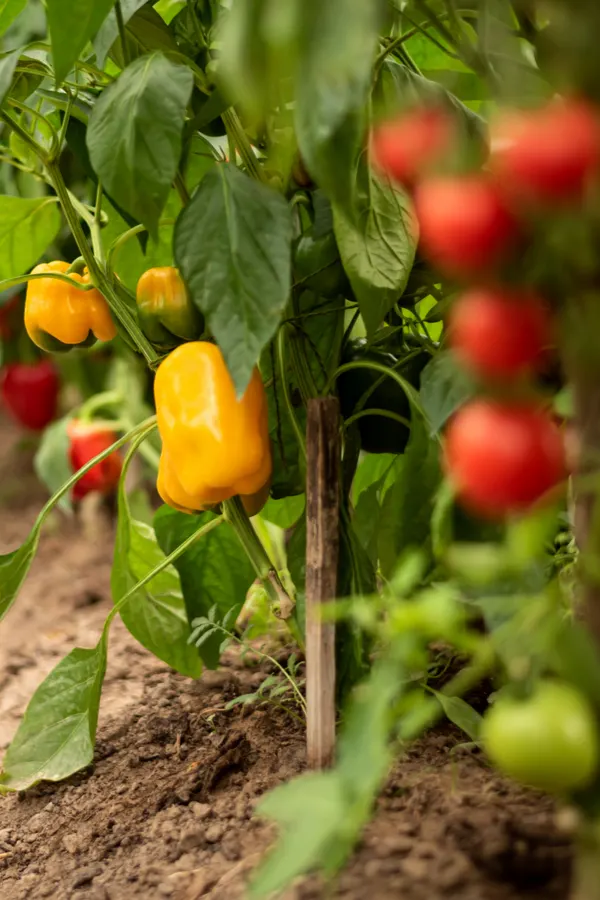
To figure out which families to group together in those sections, you can use one of the following strategies. Some are a bit more in-depth than others, so choose one that works best for your situation.
Group By Feeder Type
Some plants are heavier feeders than others. Simply put, that means that certain varieties will use up lots of nutrients from the soil in order to grow to their full potential while others need fewer nutrients.
Several crops in the Brassicas, Nightshade, Grasses, and Cucurbits family are heavy feeders. Those crops in the Allium, Aster, Umbels, and Legume families are mostly lighter feeders. Consider placing one heavy feeder family in the same section as a lighter feeder family.
The chart further down in this article shows an example of a four-year crop rotation. All eight of the crop families are included, and they are grouped by one heavy and one light feeder family.
Companion Plants & Groups To Avoid
Some plants just work well when they grow together. These types of plants are “companion plants.” There are several benefits when you use companion planting in your garden.
Some grow companion plants together because they don’t compete for nutrients. Other companion plants help to keep pests away from certain plants. Others still can benefit neighboring plants in totally different ways.
For example, corn is a great companion plant for climbing Legumes such as peas and beans. The thick corn stalks provide a sort of natural trellis for the vines to grow up. In addition, you can plant squash (from the Cucurbits family), around the base of the corn. The squash will help to snuff out weeds and act as a natural mulch.
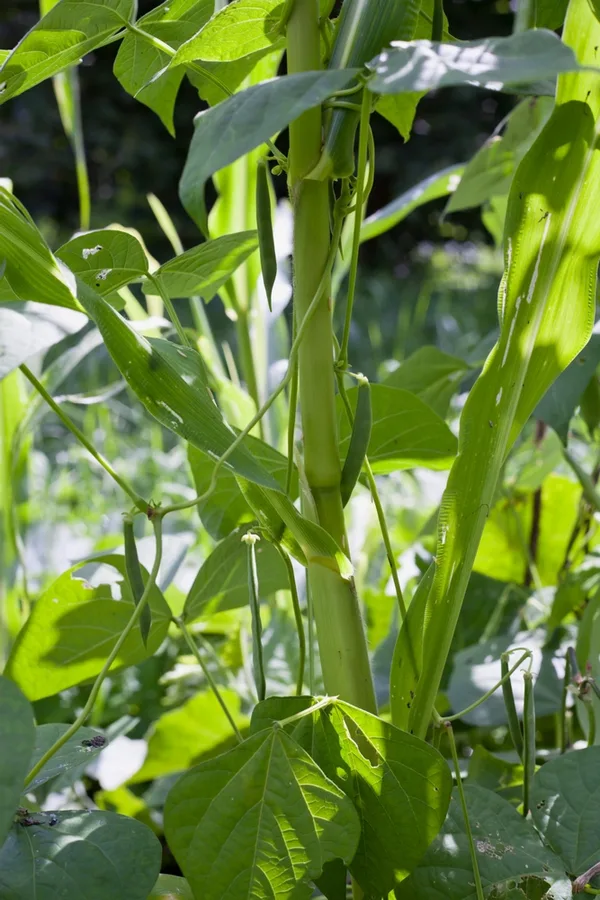
On the flip side, there are some plant families that you should never directly plant together. Either they compete too heavily for the same nutrients in the soil or they attract unwanted pests and diseases when placed in groups. No matter the reason, avoid grouping these families together.
Do not place heavy feeders like corn and Nightshades together in the same group. Avoid planting Legumes in the same group as Alliums or Brassicas. Also, avoid placing Brassicas with Nightshade crops.
It’s Time To Rotate Those Garden Crops!
Now that you have your garden separated into sections, it’s time to figure out how to rotate it. You can use the above strategies for grouping families together in the same section to also help you decide which crop families to grow after another in the following years.
For example, you won’t want to have two years in a row of heavy feeders in the same location if possible. Instead, follow a location that hosts a heavy feeder with a light feeder the next year to give the soil a break.
The same goes for using crops that can “fix” the soil. Tomatoes and corn will use up a large amount of nitrogen in order to grow. After the growing season is over, the nitrogen levels in the soil will be low. So, the following year, consider planting Legumes in that location since they will actually fix the nitrogen levels in the soil. Now that’s using nature to your advantage!
Example Rotation
Let’s pretend that you are using a four-year crop rotation in your garden. That means you have separated your growing location into four sections: Sections A, B, C & D. It also means that you have put your crop families into four groups as well based on the above-mentioned tips: Crops 1, 2, 3 & 4.
In the first year, you will grow crops 1 in location A, crops 2 in location B, crops 3 in location C, and crops 4 in location D. After a wonderful harvest and growing season, it will be time to rotate the next year. Now, crops 1 will go to location B, crops 2 will be in location C, crops 3 will be in location D, and crops 4 will move to location A. The rotation will be as follows:
First Year = 1A, 2B, 3C, 4D
Second Year = 1B, 2C, 3D, 4A
Third Year = 1C, 2D, 3A, 4B
Fourth Year = 1D, 2A, 3B, 4C
Fifth Year = 1A, 2B, 3C, 4D (back to the beginning)
To give you a little visual help, the below chart shows you an example of how you would rotate specific crop families for the next four years. After those four years, you will start the cycle all over again from the beginning. It’s really that simple!
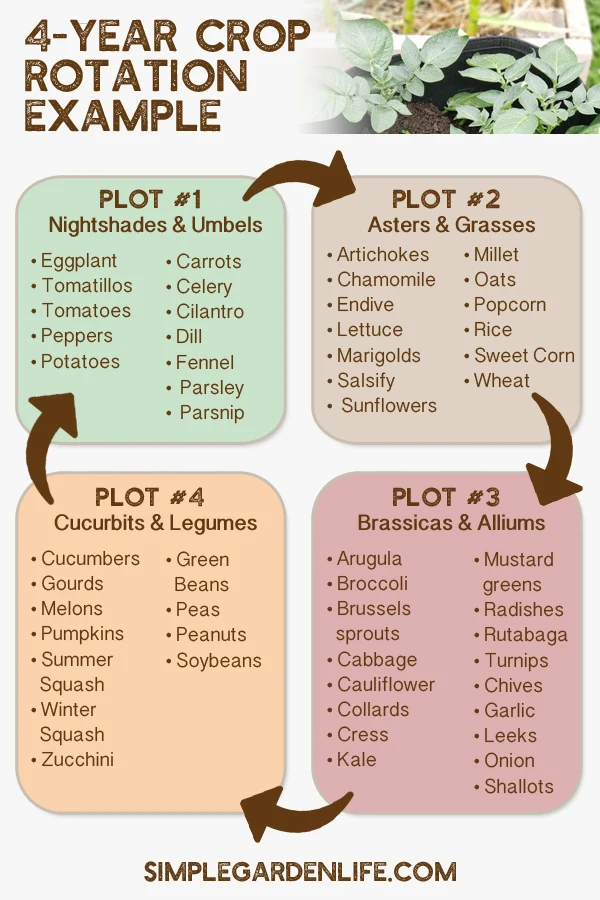
Don’t Make It Harder Than It Is!
Simply put, the goal here is to move your plants’ growing location around as much as possible. Experiment from year to year, and see what works for you and your garden (use that garden journal to take notes!). Consider planting a cover crop during your garden’s off-season to also help rejuvenate your garden soil in addition to crop rotation.
With a little early planning before your growing season even begins, you can be on your way to having a healthy and flourishing vegetable garden this year and for many years to come!
Follow Our Facebook Page For Even More Great Tips! Simple Garden Life Facebook Page
Simple Garden Life is a website dedicated to keeping gardening fun, simple and enjoyable! We publish two new articles each week along with a new garden podcast episode every two weeks. This article may contain affiliate links.
